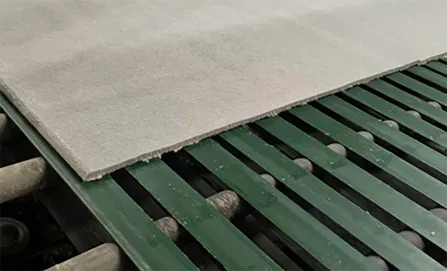Nov . 05, 2024 06:09 Back to list
main t ceiling grid
Understanding Main T Ceiling Grid An Overview
The main T ceiling grid is an essential component in the construction and design of suspended ceilings, also known as drop ceilings or false ceilings. This architectural element serves various purposes, from enhancing aesthetics to improving acoustic performance in interior spaces. As the name suggests, the “main T” refers to the primary structural support that holds the ceiling tiles in place, forming a grid-like framework that supports the entire ceiling system.
What is a Main T Ceiling Grid?
A main T ceiling grid consists of a series of main T-shaped members that run in one direction, which are then interconnected by cross tees. The main T's are typically longer, running the length of the room, while the cross tees span the width. This configuration creates a grid pattern that can accommodate various ceiling tiles or panels, allowing for flexibility in design and functionality.
Benefits of Using Main T Ceiling Grids
1. Aesthetic Appeal The suspended ceiling offers a sleek and modern look to interiors. With a variety of designs, colors, and textures available for the ceiling tiles, property owners can customize the space to align with their overall design vision. This versatility makes it suitable for various applications, from commercial offices to residential homes.
2. Improved Acoustics Main T ceiling grids can significantly enhance the acoustic properties of a room. Many ceiling tiles are designed with sound-absorbing materials that help reduce noise pollution, making these systems ideal for environments like conference rooms, classrooms, and open office spaces where sound control is vital.
main t ceiling grid

3. Concealing Utilities One of the practical advantages of a main T ceiling grid is its ability to hide unsightly plumbing, electrical wires, and ductwork. This feature not only improves the aesthetic of the space but also allows for easy access to these utilities when maintenance is required.
4. Ease of Installation The modular design of main T ceiling grids simplifies installation. Professionals can quickly lay out the grid framework and insert ceiling tiles with ease. Furthermore, the ability to remove and replace individual tiles without disturbing the entire ceiling is a notable advantage during repairs or renovations.
Installation Considerations
When considering the installation of a main T ceiling grid, it is essential to choose the appropriate materials and design suited for the specific environment. The grid system must be securely fastened to the structural ceiling to ensure stability, especially in areas with heavy foot traffic or where additional insulation or soundproofing is desired.
Proper planning is crucial before installation. This involves measuring the room accurately, determining the layout, and deciding on the type of ceiling tiles. There are various types of tiles available, including acoustic tiles, vinyl-faced tiles, and decorative tiles, each serving different purposes.
Conclusion
In summary, the main T ceiling grid is a fundamental aspect of suspended ceiling systems, offering a blend of aesthetic appeal, functional benefits, and practical installation. Its contribution to improving indoor acoustics, concealing utilities, and providing flexibility in design makes it a popular choice in modern architecture. Whether you are renovating a residential space or designing a commercial environment, understanding the features and advantages of main T ceiling grids can help you make informed decisions that will enhance the overall quality and appearance of your interiors.
-
Durable Ceiling T Grid Systems | Easy InstallationNewsAug.29,2025
-
PVC Gypsum Ceiling: Durable, Laminated Tiles for Modern SpacesNewsAug.28,2025
-
Pvc Gypsum Ceiling Is DurableNewsAug.21,2025
-
Mineral Fiber Board Is DurableNewsAug.21,2025
-
Ceiling Tile Clip Reusable DesignNewsAug.21,2025
-
Ceiling T Grid Modular DesignNewsAug.21,2025







